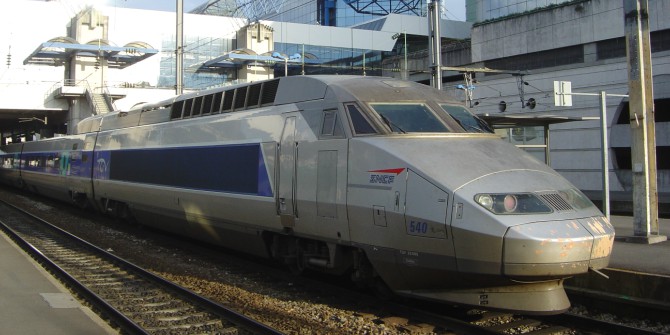How much hyperinflation in interwar Germany contributed to the rise of the Nazis to political power is still, nearly a century later, a topic of debate. Gregori Galofré-Vilà explores the political and social consequences of hyperinflation in over 500 cities using prices and election returns for the seven federal elections held between 1924 and 1933 and find no connection between the traumatic experience of hyperinflation and the electoral success of the Nazis nearly a decade later.
In recent years, Germany has been leading the European Union and its institutions in a tight and conservative monetary policy. A focal point has been the European Central Bank’s purchases of government debt, and Draghi’s famous commitment in July 2012 to do “whatever it takes” to save the euro. Now, in response to the Covid-19 crisis, the debate is moving toward the creation of Eurobonds to resume the path of growth. For nearly a century, Germans have been scarred by the traumatic experience of inflation in the 1920s, placing price stability at the top of its list of economic priorities, due to fears of economic collapse and political extremism. Back then, in the span of only a few months, prices increased by up to nearly one trillionfold. In January 1923, a US dollar was worth 17,000 marks (24,000 marks in April and 353,000 marks in July). By November, a dollar was worth 2,193 trillion marks, and, by December, 4,200 trillion marks.
Despite the fact that the origins and the economic consequences of hyperinflation are well studied (linked to the agreements reached at Versailles at the end of World War I), there is little clarity about its political legacy. Indeed, its contribution to the rise of the Nazis to political power is still, nearly a century later, a topic of considerable debate. Media outlets like The Economist have repeatedly argued that “Germany’s interwar experience with hyperinflation famously created a political climate amenable to the rise of Adolph Hitler” (see also the BBC). In academia, some economists like Acemoglu opined that hyperinflation “set the stage for the ascent of the Nazi party”, but others, like Krugman, pointed out that “No, the 1923 hyperinflation didn’t bring Hitler to power; it was the Brüning deflation and depression”. Historians like Feldman also contend that, at most, “its connection to the events surrounding the Republic’s demise and Nazism’s triumph are complicated and indirect.” Despite this controversy, I am not aware of any direct quantitative assessment of this issue.
In a recent study, I explore the political and social consequences of hyperinflation in over 500 cities using prices and election returns for the seven federal elections held between 1924 and 1933. Contrary to what some have argued and to received wisdom, as Figure 1 depicts, I find no connection between the traumatic experience of hyperinflation and the electoral success of the Nazis nearly a decade later. Together with the statistical results, using archival documentation from newspapers and mass pamphlets, I also developed a historical narrative that shows that, even though the Nazis had an anti-inflation rhetoric, after the fall of 1931, the Social Democratic Party and the Communists forcefully used the fear of new inflation if the Nazis were elected as part of their political speech. In the paper I also show that this lack of connection does not mean that hyperinflation did not have a very negative effect on German society in the 1920s, but simply that the suffering generated by hyperinflation was not connected to the electorate that voted for Hitler a decade later.
Figure 1. Prices and Nazi voting

Note: The first five maps display the spatial distribution of the variable cost-of-living index (Teuerungsraten) across German cities in January of each year. The later one displays the vote share of the Nazi party in the 1933 election. Source: Author based on Official German data.
There are a number of paradoxical situations that stem from this historical episode. One has to do with the collective fear of inflation, rather than the political choices to avoid it. As Galofré-Vilà et al. have shown, it seems an irony that Chancellor Brüning, who was adamant that any inflationary move had to be avoided because of the memories of hyperinflation, drove Germany towards deflation and austerity, and ultimately to the Third Reich. A parallel can be established with the European economic situation in 2007/2008, when Angela Merkel and the Troika were reluctant to purchase public debt because of fears of inflation and instead used deflation and austerity, with the well-known disastrous impact on the southern European economies, which would last for over a decade, and would, in turn, open the door to new waves of populism.
Those in the grip of the fear of inflation also seem to misremember Weimar. Using modern survey data, Haffert et al. found that many Germans could not distinguish clearly between hyperinflation and the Great Depression, and apparently thought about the two events as the same thing. About half of all Germans think of the Great Depression as a period of high inflation, whereas fewer than 5% know that it was, in fact, a period of deflation.
Although this is sometimes forgotten, hyperinflation also wiped out all debt denominated in the German currency, including all domestic public debt. By contrast, Britain and France were sitting on huge domestic debt piles stemming from WW1. It is therefore striking that, once Germany got rid of its debt by means of inflation, it refused to buy public debt to countenance any rise in prices. Meanwhile, other countries like Britain, which had a more flexible attitude towards buying public debt even if it led to more inflation, always had paid their debts.
It is a fascinating and difficult empirical question to ascertain the extent to which the memory of a historical episode informs the decision-making of political leaders and the perceptions of an electorate at a particular historical juncture. It is a challenging theoretical question to elucidate in which cases and to what extent historical parallels are meaningful or relevant. Nonetheless, there is a prima facie case to argue that few episodes of the European historical past hold so much sway on our recent time (the 2007-08 crisis and the policies designed to overcome it), and our short-term future (due to the COVID-19 pandemic crisis), as the hyperinflation of 1923. This article has endeavoured to correct our understanding of this episode. So, if a meaningful parallel is established with the present situation, and insofar as it might help to guide our current efforts, very different lessons from those taken for granted in the past should be paid heed: neither the political impact of the 1923 German hyperinflation was as perverse as previously thought on the political side, nor its economic and social impact was as dire and uniform.
Subscribe to the weekly LSE Blogs newsletter to receive the latest articles in your inbox.
♣♣♣
Notes:
- This blog post is based on the author’s paper The Costs of Hyperinflation: Germany 1923, March 2021.
- The post represents the views of the author(s), not the position of LSE Business Review or the London School of Economics.
- Featured image available in the holdings of the National Archives and Records Administration, catalogued under the National Archives Identifier (NAID) 196509, via Wikimedia, Public Domain.
- When you leave a comment, you’re agreeing to our Comment Policy.






The collapse of the German Mark and the Great Depression created such discord that absent effective leadership, A.Hitler was able to establish his foothold, ridiculed at first but then provisionally accepted. This, not in small part, through the SA, an army of disillusioned volunteers using any and all means to beat into submission any group of nonbelievers, especially the Communists and Socialists.
Given the turbulence of the time they succeeded , and eventually saw Hitler take power, at which point the Nazi party was taken over and became the internal organization to create validity and glamor.
The NZ Party was popularized by people in some leadership, and who could be relied upon to support the regime, and was not beyond punishing nonbelievers of rank with immediate dismissal and other career ending consequences. Thus, the party had an elevated position, reaching far and wide, including head teachers of elementary schools. This then was the the development within a country in turmoil, starting with the Great Recession that followed the disastrous financial collapse and created the ground for Hitler’s success.
Given the fact that I had direct descendants that lived in Berlin at the time who told me a loaf of bread was extremely high at the time, I’m sure that such prices and the poor economy had nothing at all to do with the unhappiness of the general population, and paying such prices had nothing to do with their irritation at the state of everything, and therefore the citizens were looking for someone who was going to address the economy. The owners of businesses were also driving prices high by taking advantage of the poor economic situation.
Go and speak to some actual German people that are still living if you can find some, then your ‘story’ might be a little more accurate.